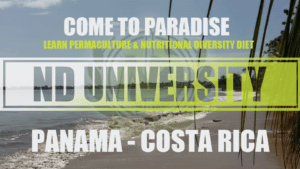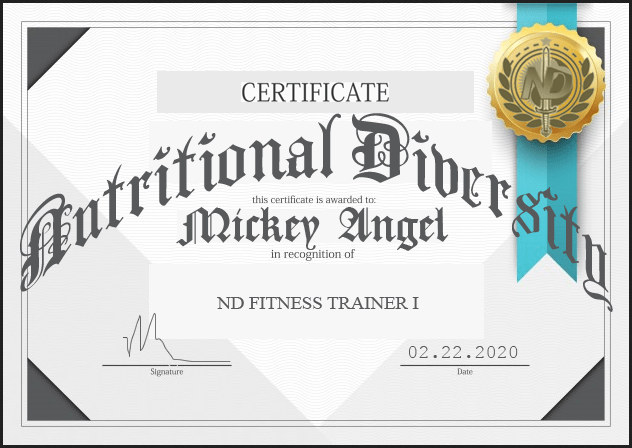Physical Practice
How We Can Prevent The California Wildfires from Happening Again & Make Money & Enhance Life
Physical Practice
Interview Request – A New Paradigm for True Freedom & Resilience
Subject: Interview Request – A New Paradigm for True Freedom & Resilience
Dear Shawn Ryan & Team,
I recently watched your powerful interview with Julian Dorey, and I couldn’t help but recognize the urgency of the vulnerabilities you discussed—especially the power outage risks, the escalating health crisis, and the misguided climate change conversation. These are symptoms of a broken system, and what I’ve discovered is not just a patchwork solution—it’s a new paradigm that, if followed, makes people impervious to these vulnerabilities.
I’d love to come on your show to discuss how Nutritional Diversity unlocks the highest level of human resilience—from energy independence to immune system mastery, to food security, to stepping into true freedom.
Why This Conversation Matters:
✅ Grid Failure? You Won’t Need It. –I hear your sincere concern! A properly designed society, in harmony with nature, will produce sustainably its own electric, in ways you would not think of now, but I can present to everyone through your outlet. A properly fueled body and mind can endure extreme conditions, and this independence starts with knowledge. Nutritional Diversity is the key to thriving in an off-grid or disrupted world.
✅ Health Crisis? Solved. – The pharmaceutical system profits off weakness. Nutritional Diversity restores unshakable vitality, cognitive power, and immune strength by unlocking ancient nutritional intelligence.
✅ Climate Change Debate? Over. – Regenerative agriculture and Nutritional Diversity not only heal the planet but also make individuals untouchable to food shortages and engineered scarcity.
✅ The Truest Freedom Page – God’s Page. – This isn’t just about food. It’s about reclaiming human power. This system taps into the soul’s alignment with nature, divine order, and self-mastery.
Beyond the knowledge and implementation of Nutritional Diversity, I’m also working to reinvent the supplement industry from the ground up. I can help create the ultimate supplements—formulations that aren’t just trendy powders and pills but true nutritional powerhouses designed for optimal absorption, microbiome health, and long-term resilience. The entire manufacturing and delivery system for supplements needs a massive overhaul, eliminating synthetic garbage and creating highly bioavailable, full-spectrum nutrition solutions. This is another layer of the paradigm shift—equipping people with real tools, not industry gimmicks.
This movement can be driven and co-solutioned by homeless individuals, non-violent criminals, untasked military personnel, departments of ecology, and even drones—providing solutions in ways that repurpose resources effectively while restoring health and resilience at scale.
Adding to the gravity of this conversation, there is also a riveting real-life murder story running in the background—one that will have viewers glued to their screens. I arrived in Panama claiming his remains after he was brutally murdered in a scheme that targeted multiple Americans for their property. This story was later covered in an ABC special and bestselling books. At the same time, I became the target of another devastating event—the kidnapping and alienation of my daughter through a manipulative and corrupt system – soul-shakingly the same thing that sent the murderer on his killing spree. After losing my daughter and being locked out of the country on false claims, I wanted to kill everyone I saw, and for this reason, I went into the Jungle and lived there for about 5 years. These personal tragedies fueled my mission, shaping my understanding of resilience, truth, and survival in ways that few have experienced firsthand. I was given the concept of nutritional diversity through prayer.
What makes this even more critical is that my personal tragedy is not unique—over 22 million children have been affected by this form of psychological warfare, described by experts as the ultimate form of child abuse. Parental alienation is a silent epidemic, stripping children of their connection to a loving parent, often leaving them emotionally scarred for life. By exposing this issue alongside the greater paradigm shift, we shine a light on the deeper control mechanisms at play and offer real solutions for breaking free.
This is more than a conversation. It’s a wake-up call for those who are ready to break free from every form of control—nutritional, environmental, and spiritual. I know your audience is hungry for real solutions, and this is the most powerful, actionable strategy they will hear.
Let’s make this happen. Looking forward to your thoughts!
Best, Brandon Angel, Nutritional Diversity Sciences
Reach out! ![]()
-will send the ABC special (still on YouTube) and book title on request.
Physical Practice
Modern Agriculture Chemicals Directly Related to Human Sickness
Exposure to agricultural chemicals has been linked to various human health issues. Here are 20 studies and reports highlighting these associations:
-
Respiratory Diseases: Studies have reported that acute or chronic exposure to pesticides leads to airway diseases such as allergic rhinitis or asthma.
-
Endocrine Disruption: Some pesticides act as endocrine disruptors and have been shown to cause serious harm to animals, including cancer, sterility, and developmental problems.
-
Neurological Disorders: Current research suggests that exposure to synthetic pesticides may be associated with adverse health outcomes, including neurological disorders.
-
Chronic Illnesses: Human exposure to chemical pesticides is linked to chronic illnesses such as cancer, and heart, respiratory, and neurological diseases.
-
Parkinson’s Disease: According to the WHO (2022), some of the measures to prevent Parkinson’s disease include banning pesticides (e.g., paraquat and chlorpyrifos) which have been linked to PD.
-
Developmental Issues in Children: Epidemiological and experimental animal studies suggest that infants and children are more susceptible than adults to the effects of low-dose exposure to chlorpyrifos, leading to negative impacts on cognitive functions.
-
Increased Cancer Risk: A study analyzing 300 pesticides found 22 linked to prostate cancer development, with four increasing the likelihood of death.
-
Birth Defects: Preliminary reports reveal significant associations between paraquat exposure and birth defects in the heart and lower limbs.
-
Thyroid Disorders: Exposure to paraquat has been linked to an increased risk of thyroid diseases.
-
Immune System Impairment: Twelve people exposed to chlorpyrifos were found to have heightened immune responses to common allergens and increased antibiotic sensitivities.
-
Oxidative Stress: Exposure to synthetic pesticides has been linked to oxidative stress, which can lead to various health issues.
-
DNA Damage: Studies have associated pesticide exposure with DNA damage, potentially leading to long-term health effects.
-
Reproductive Health Issues: Laboratory animal research reveals potential impacts on reproduction due to chronic exposure to sub-lethal levels of glyphosate-based herbicides.
-
Metabolic Disorders: Exposure to synthetic pesticides has been linked to metabolic effects, potentially leading to disorders such as diabetes.
-
Skin Irritation: Some pesticides may irritate the skin or eyes upon exposure.
-
Carcinogenic Potential: Some pesticides may be carcinogens, increasing the risk of cancer.
-
Hormonal Imbalances: Pesticides may affect the hormone or endocrine system in the body, leading to various health issues.
-
Respiratory Issues in Agricultural Workers: Agricultural workers exposed to chlorpyrifos have been associated with a slightly increased risk of wheeze, a whistling sound while breathing due to airway obstruction.
-
Neurological Developmental Problems: Children with prenatal exposure to chlorpyrifos have been shown to have lower IQs and a higher chance of developing attention deficit problems and developmental disorders.
-
Increased Mortality Rates: A study analyzing pesticides found certain chemicals linked to higher mortality rates in prostate cancer patients.
These studies underscore the potential health risks associated with exposure to various agricultural chemicals.
Physical Practice
Diverse Diet Studies & Mentions * A 2025 Overview
A diverse diet is crucial for optimal health, as supported by numerous scientific studies. Here are several key findings:
-
Dietary Diversity and Mortality Reduction: A longitudinal study from the China Health and Nutrition Survey found that individuals who maintained a higher dietary diversity score had a 22% reduced risk of all-cause mortality.
-
Enhanced Cognitive Function: Research indicates that diversified diets are positively associated with better cognitive function, slower cognitive decline, and a reduced risk of dementia among older adults.
-
Improved Diet Quality: A study published in Frontiers in Nutrition found that higher dietary diversity scores were associated with increased fiber, fruit, and vegetable intake, greater meal frequency, and lower ultra-processed food consumption.
-
Comprehensive Nutrient Intake: Consuming a variety of foods ensures intake of different vitamins, minerals, nutrients, and phytochemicals, which can help prevent nutrient deficiencies and chronic diseases.
-
Inflammation Reduction: Diverse diets rich in anti-inflammatory proteins, such as beans, fatty fish, lentils, and nuts, can help reduce the risk of chronic diseases like heart disease and type 2 diabetes.
-
Gut Microbiome Health: A varied diet promotes a healthy gut microbiome, which is linked to improved digestion, enhanced immune function, and better skin health.
-
Hormonal Balance: Diet significantly influences hormonal health. Diets rich in whole foods, like the Mediterranean diet, may boost testosterone and reduce cortisol and estrogen levels, potentially lowering cancer risks.
-
Cancer Risk Reduction: Regular consumption of yogurt has been linked to a lower risk of colorectal cancer, possibly due to beneficial bacteria that improve gut health.
-
Weight Management: A high-protein, high-fiber Mediterranean diet can aid in weight loss and maintenance by promoting satiety and reducing overall calorie intake.
-
Cardiovascular Health: Diets emphasizing a variety of plant-based foods and healthy fats, such as the Nordic diet, have been associated with improved heart health and reduced inflammation.
-
Longevity: Studies, such as the Adventist Health Studies, have shown that plant-based diets rich in diverse foods are linked to increased life expectancy and reduced risk of chronic diseases.
-
Metabolic Health: Research indicates that a varied diet can improve insulin sensitivity and lower the risk of metabolic syndrome.
-
Nutrient Adequacy: Dietary diversity is associated with higher micronutrient adequacy, ensuring sufficient intake of essential vitamins and minerals.
-
Reduced Obesity Risk: Some studies suggest that greater dietary diversity is linked to a lower prevalence of overweight and obesity in adults.
-
Improved Mental Health: A diverse diet rich in fruits, vegetables, and whole grains has been associated with a lower risk of depression and anxiety.
-
Enhanced Immune Function: Consuming a variety of nutrient-rich foods supports a robust immune system, aiding in disease prevention.
-
Bone Health: Diets diverse in fruits and vegetables provide essential nutrients like calcium and vitamin K, which are vital for maintaining strong bones.
-
Skin Health: A varied diet rich in antioxidants from different fruits and vegetables can improve skin appearance and reduce signs of aging.
-
Digestive Health: Incorporating a wide range of fiber-rich foods promotes healthy digestion and prevents constipation.
-
Reduced Risk of Chronic Diseases: Overall, a diverse diet is linked to a lower risk of various chronic diseases, including cardiovascular diseases, diabetes, and certain cancers.
These studies collectively highlight the importance of a highly diverse diet in promoting overall health and reducing the risk of various diseases.
-

 Agriculture2 years ago
Agriculture2 years agoWhy Small Alternative Tropical Agriculture is the Best Investment Today
-

 Special Elements5 years ago
Special Elements5 years agoBest Garlic Vine Rankings, Benefits, Side Effects & Experience
-

 Special Elements3 years ago
Special Elements3 years agoBest Pre-Workout Supplement Rankings, Benefits, Side Effects & Experience
-
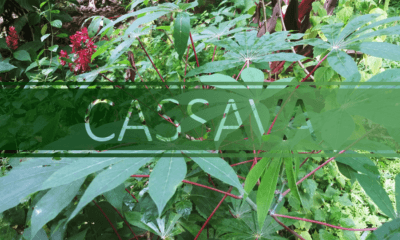
 Special Elements3 years ago
Special Elements3 years agoBest Cassava Manioc, Rankings, Benefits, Cancer Cure & Experience
-
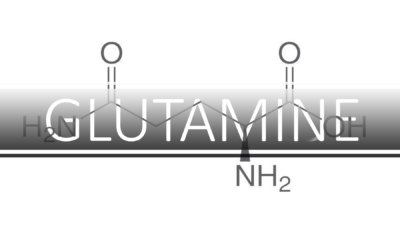
 Special Elements3 years ago
Special Elements3 years agoBest Glutamine Rankings, Benefits, Side Effects & Experience
-
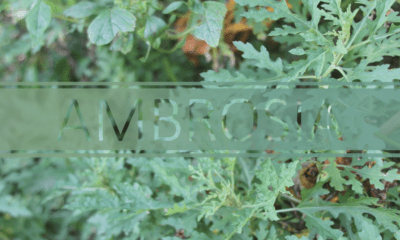
 Special Elements5 years ago
Special Elements5 years agoBest Ambrosia, Wormwood Rankings, Benefits, Side Effects & Experience
-
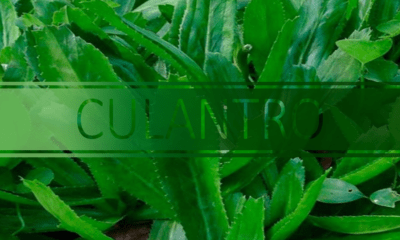
 Special Elements5 years ago
Special Elements5 years agoBest Culantro Rankings, Benefits, Side Effects & Experience
-

 Special Elements3 years ago
Special Elements3 years agoBest Katuk Rankings, Benefits, Side Effects & Experience


